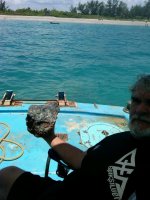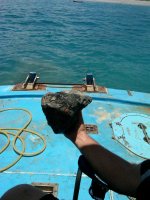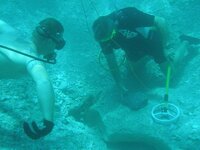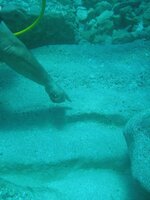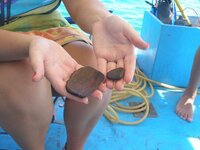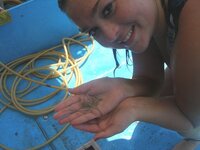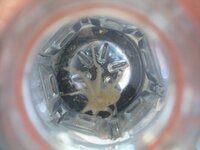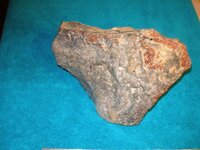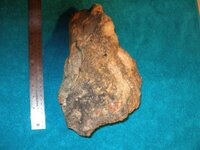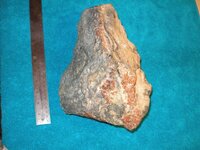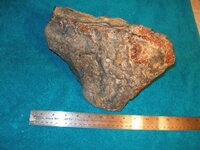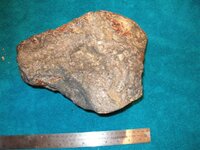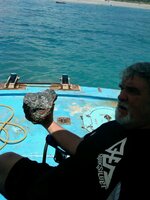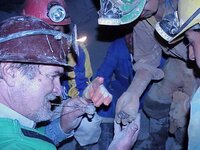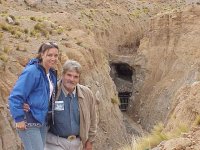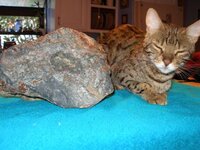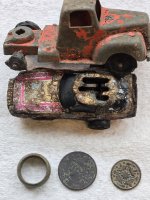capt dom
Hero Member
We may have discovered an ancient meteorite yesterday!
We were excavating a deep hole at the shipwreck site yesterday
and the day before.
 We got down to the pie shaped big pieces of
We got down to the pie shaped big pieces of
rock that came out of the inlet and the wavy bedrock where the thousands of
years ago the surf pounded over time when the sea level was lower....
{I will post photos of this later if there is any interest}
Then the Aqua Pulse started to ring! At first I thought it was a ballast stone as it
almost has the color of granite but even under water it seemed heavier than granite!
I sent it up and kept working the hole. When I got up on deck - I took a closer
look and one side of the specimen seemed melted! It was somewhat smoother than the
other side! It also appears to have "regmaglypts" looks like (thumbprints) on it.
I tried the refrigerator magnet trick but that didn't work! Old meteorites in salt water
over time can have the iron content leach out or corrode away!?
It may be ore an enterprising returning captain placed in his bilge for valuable ballast.
Anyhow, it is a cool rock - one way or the other!

Here are some photos....
We were excavating a deep hole at the shipwreck site yesterday
and the day before.

 We got down to the pie shaped big pieces of
We got down to the pie shaped big pieces of rock that came out of the inlet and the wavy bedrock where the thousands of
years ago the surf pounded over time when the sea level was lower....
{I will post photos of this later if there is any interest}
Then the Aqua Pulse started to ring! At first I thought it was a ballast stone as it
almost has the color of granite but even under water it seemed heavier than granite!
I sent it up and kept working the hole. When I got up on deck - I took a closer
look and one side of the specimen seemed melted! It was somewhat smoother than the
other side! It also appears to have "regmaglypts" looks like (thumbprints) on it.
I tried the refrigerator magnet trick but that didn't work! Old meteorites in salt water
over time can have the iron content leach out or corrode away!?
It may be ore an enterprising returning captain placed in his bilge for valuable ballast.
Anyhow, it is a cool rock - one way or the other!


Here are some photos....


